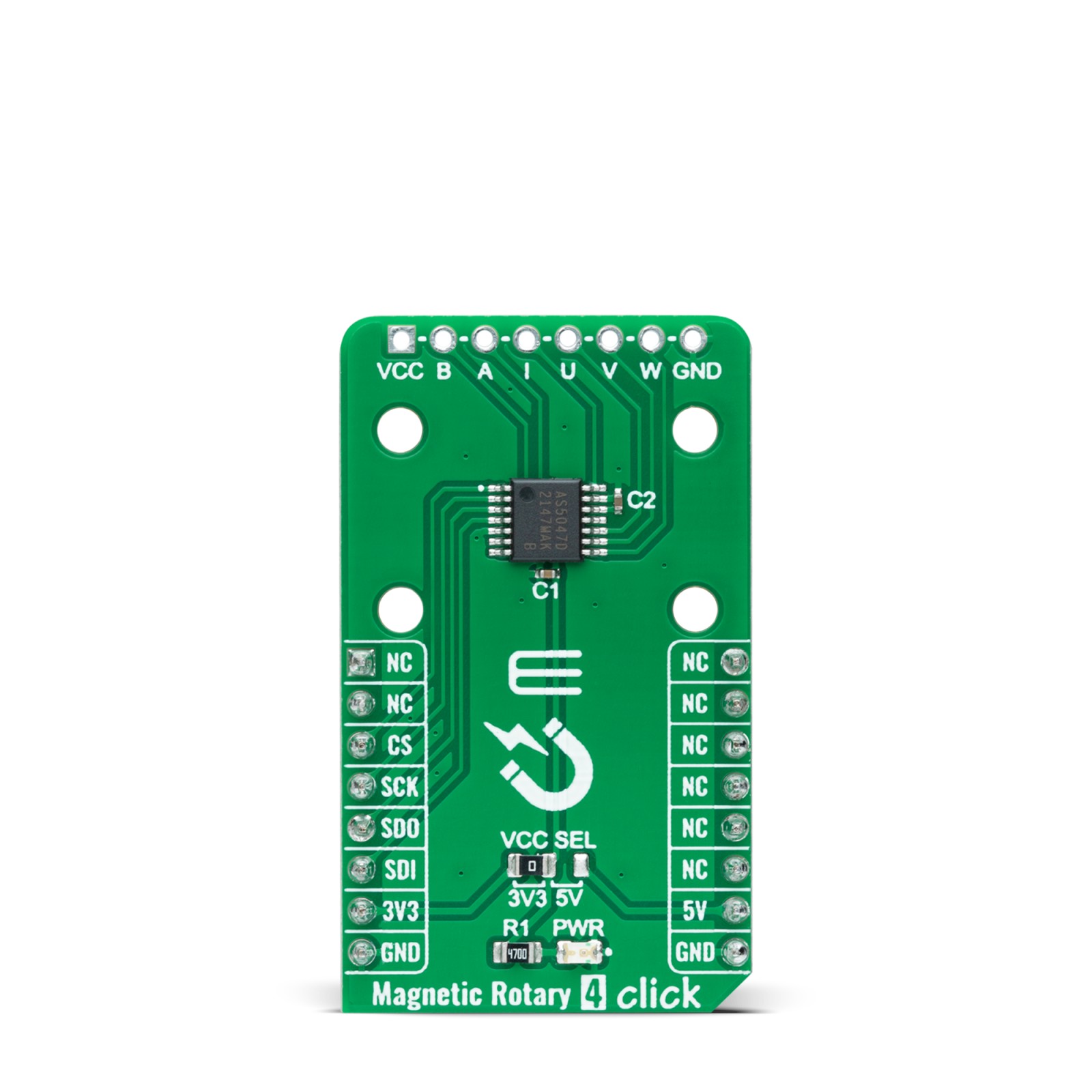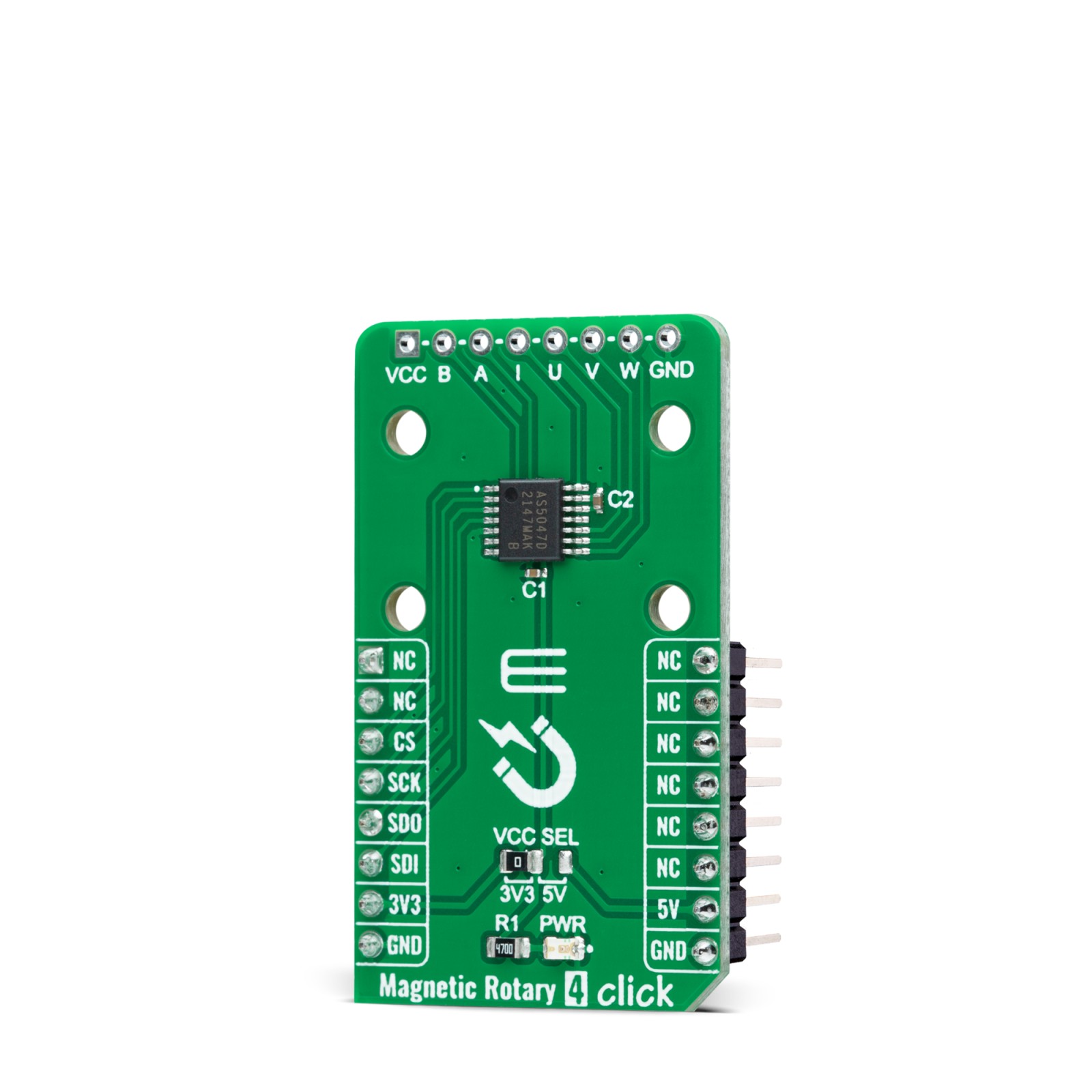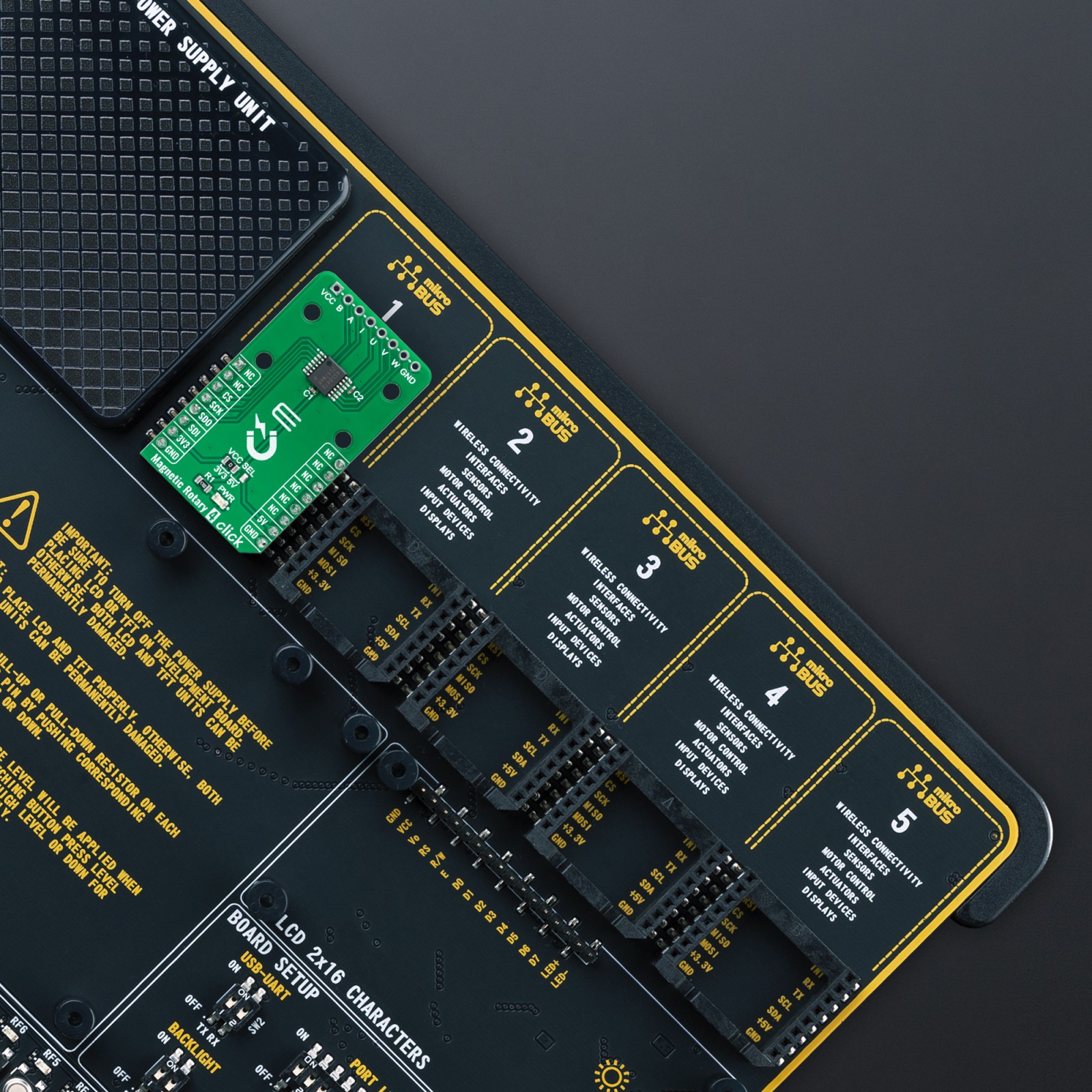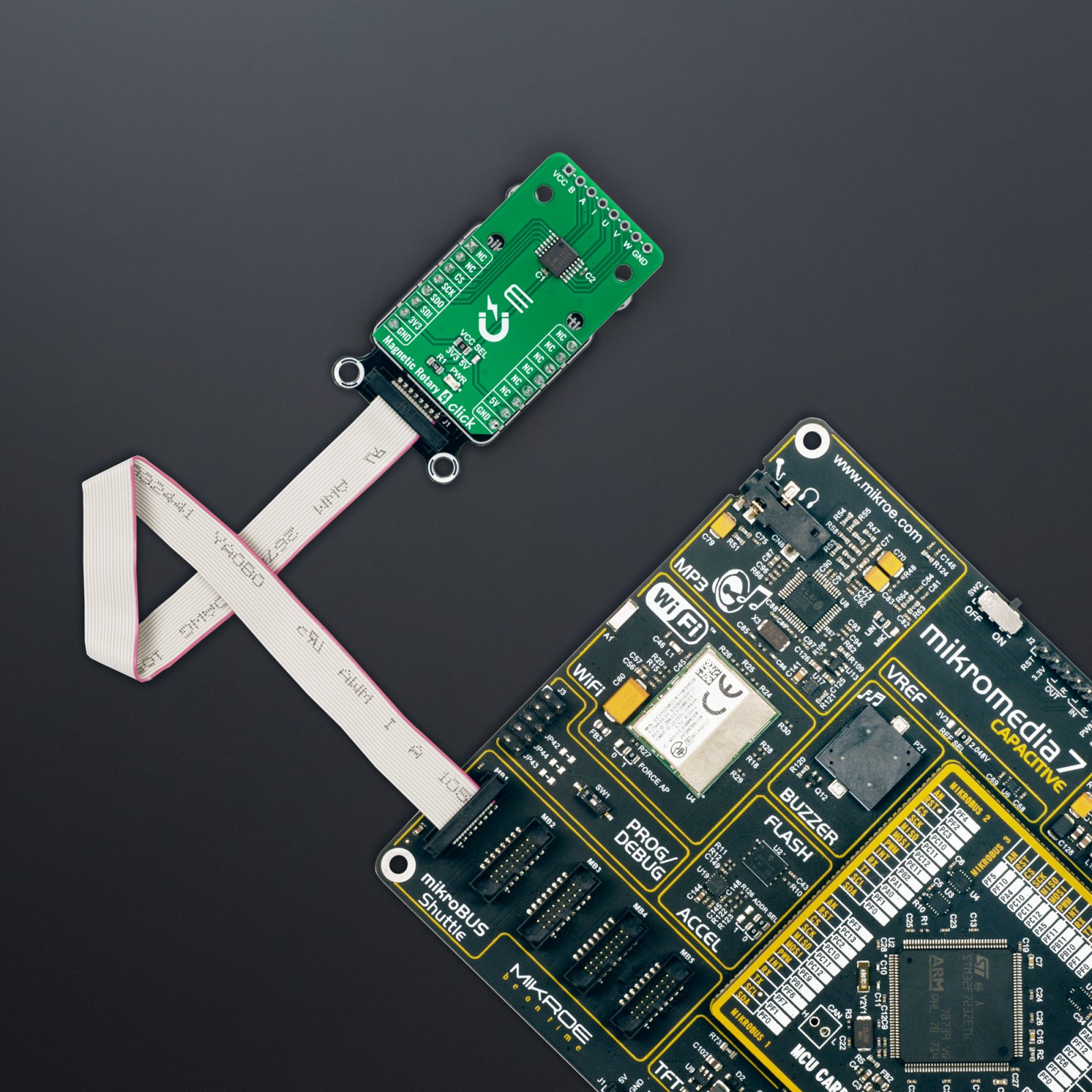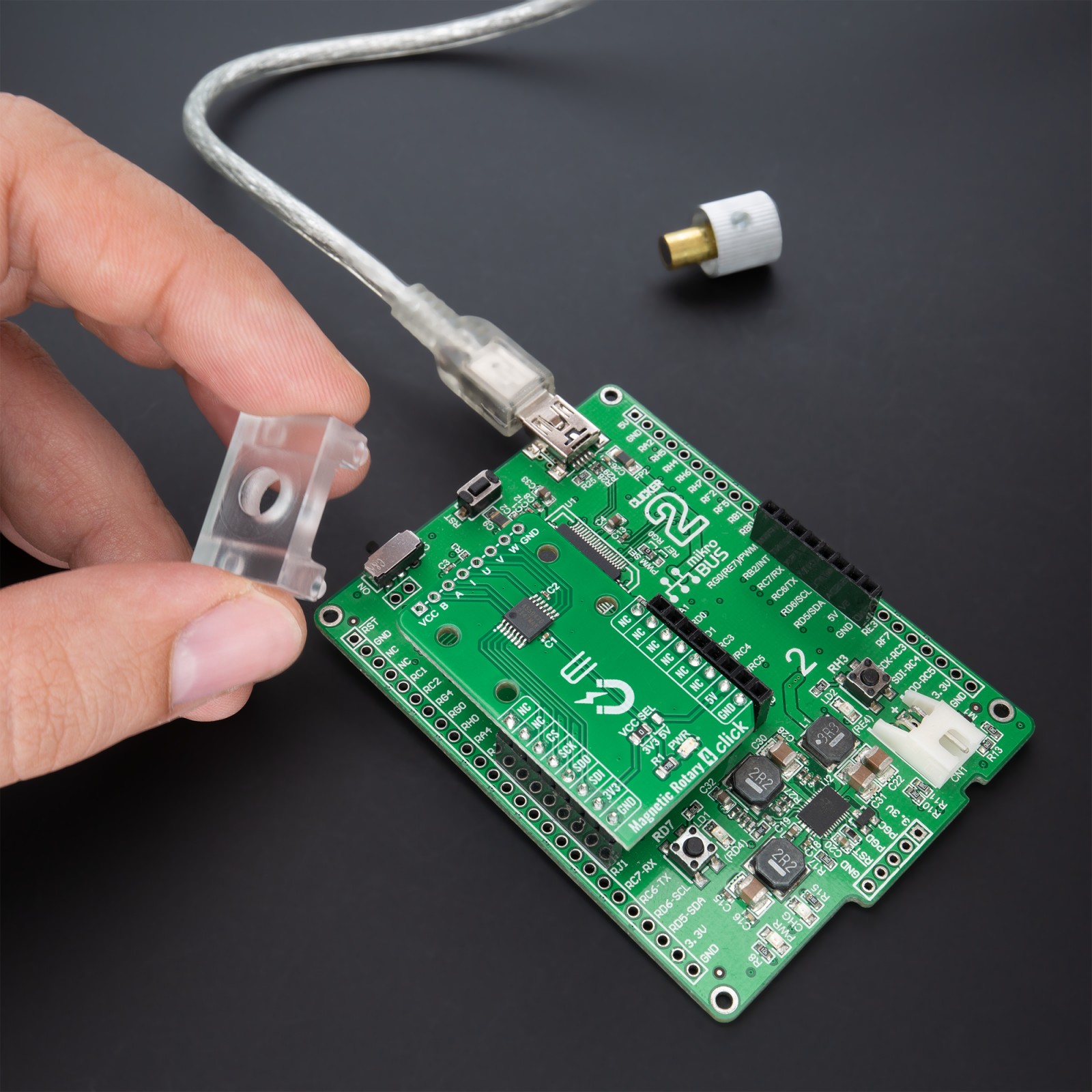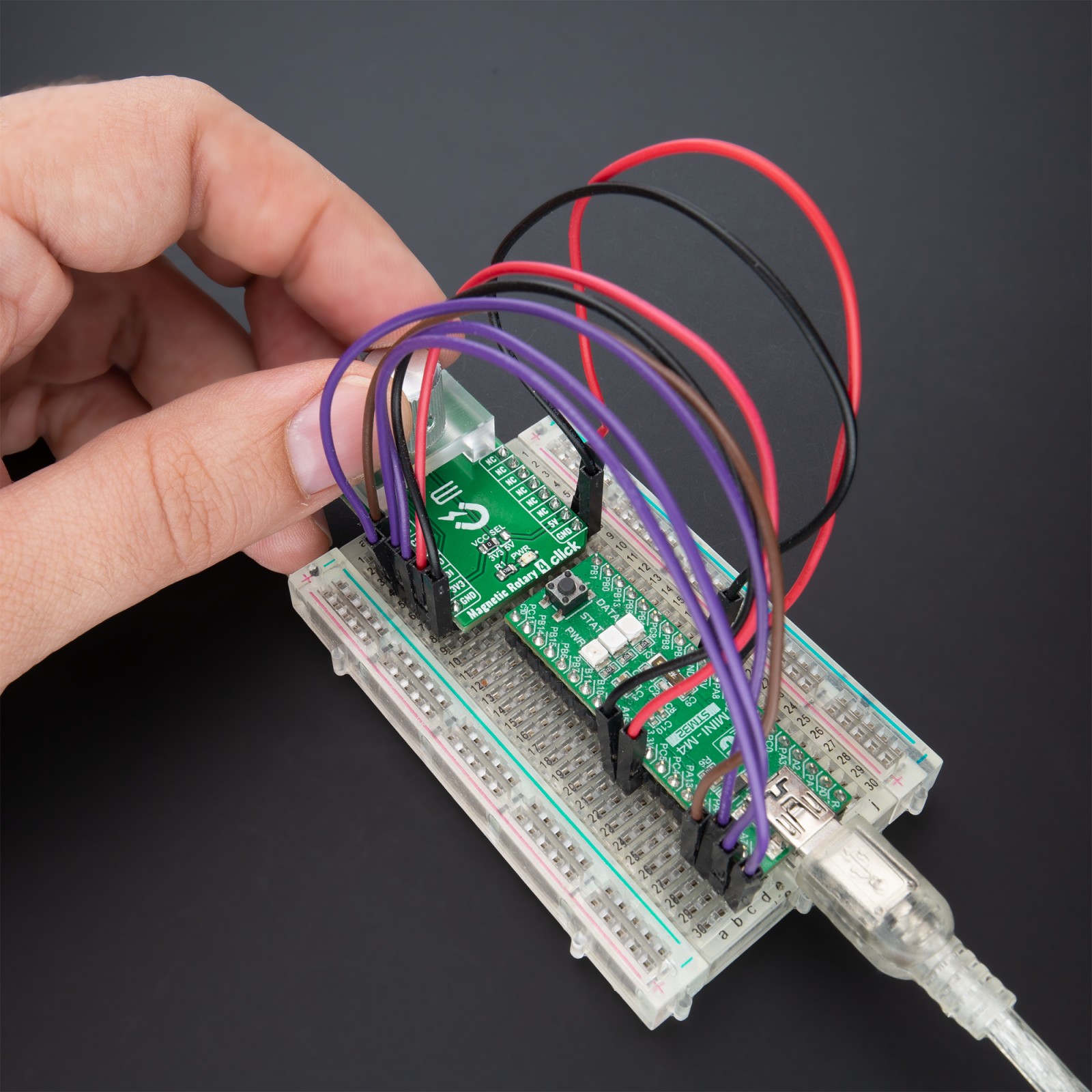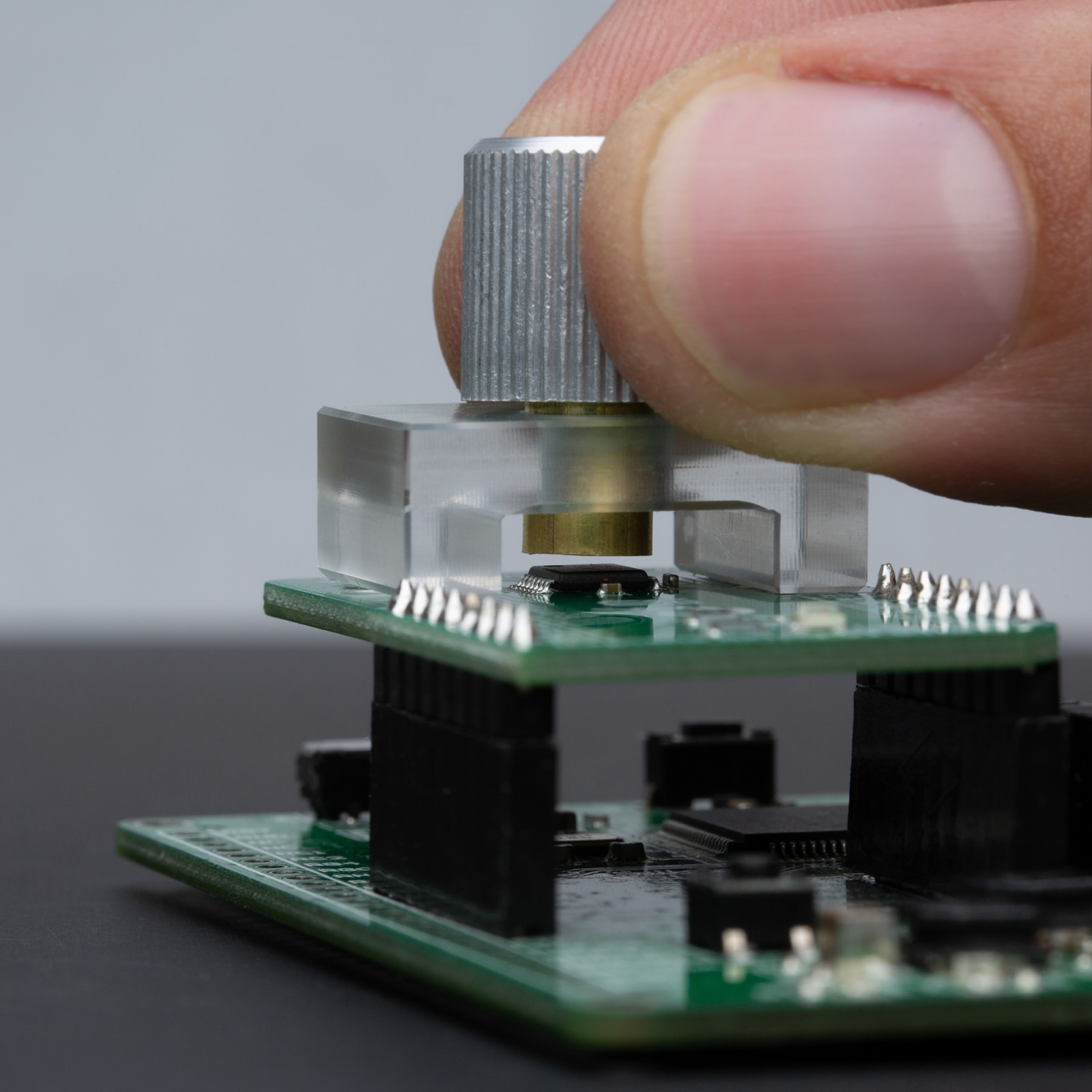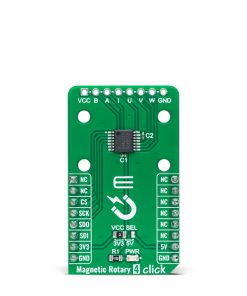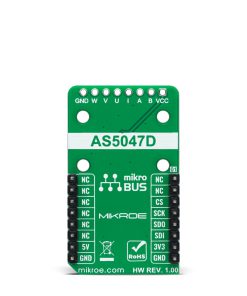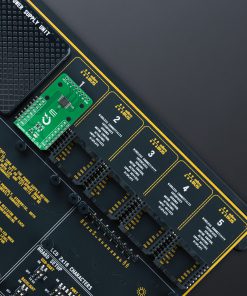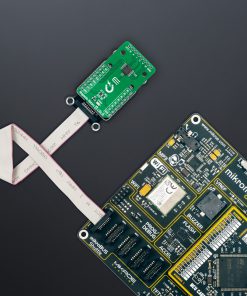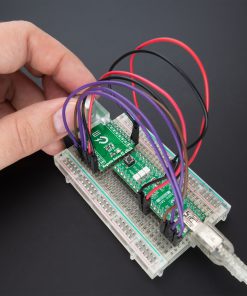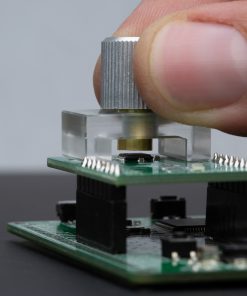Magnetic Rotary 4 Click
R470.00 ex. VAT
Magnetic Rotary 4 Click is a compact add-on board for accurate magnet-position sensing. This board features the AS5047D, an SPI-configurable high-resolution rotary position sensor for fast absolute angle measurement over a full 360-degree range from ams AG. The AS5047D is equipped with revolutionary integrated dynamic angle error compensation (DAEC™) with almost 0 latency and offers a robust design that suppresses the influence of any homogenous external stray magnetic field. It also comes with an onboard header reserved for incremental and commutation signals of their respective A/B/I and U/V/W signals alongside embedded self-diagnostics, including magnetic field strength, lost magnet, and other related diagnostic features. This Click board™ has been designed to support BLDC motor commutation for the most challenging automotive applications.
Magnetic Rotary 4 Click is supported by a mikroSDK compliant library, which includes functions that simplify software development. This Click board™ comes as a fully tested product, ready to be used on a system equipped with the mikroBUS™ socket.
Stock: Lead-time applicable.
| 5+ | R446.50 |
| 10+ | R423.00 |
| 15+ | R399.50 |
| 20+ | R384.46 |

